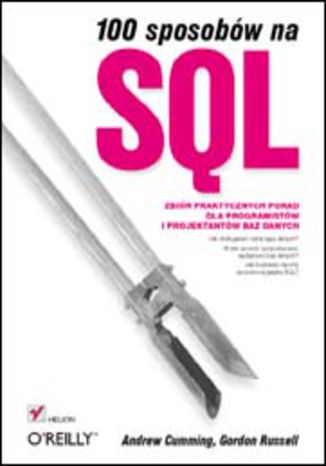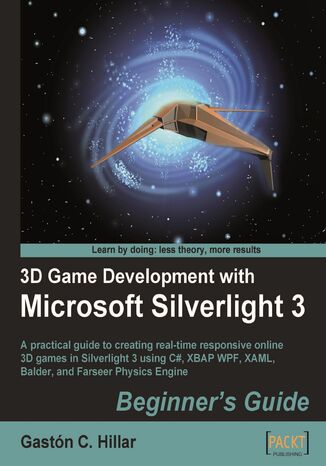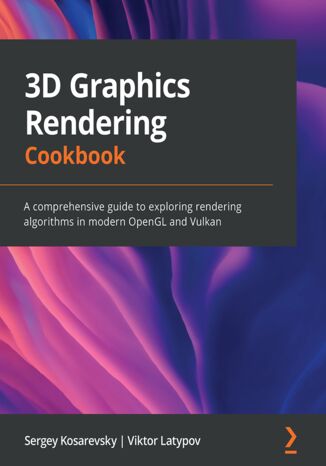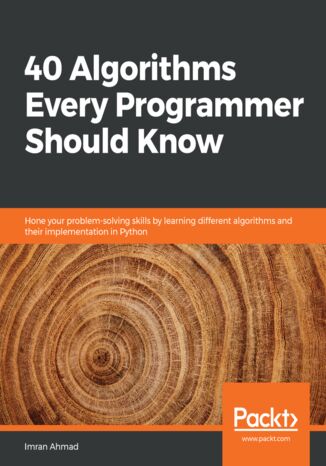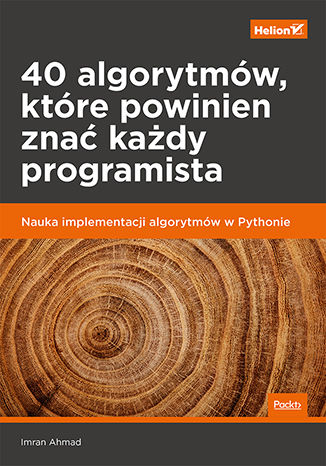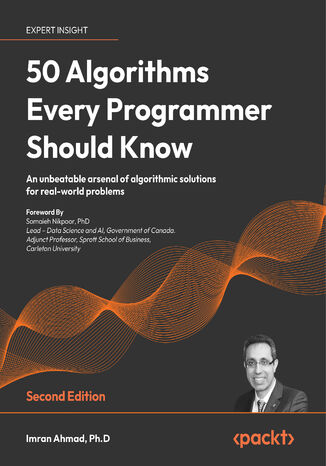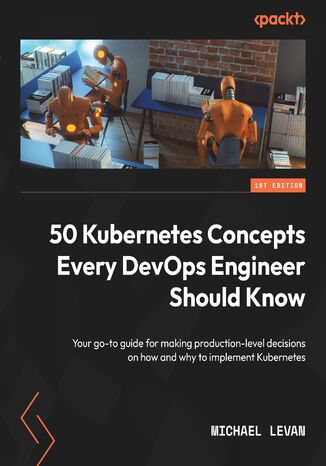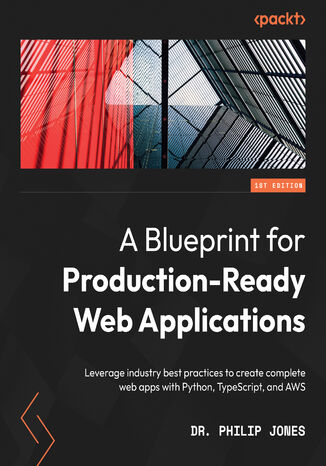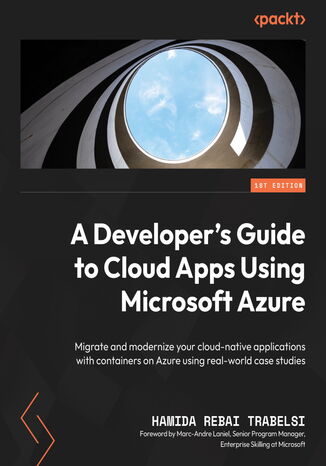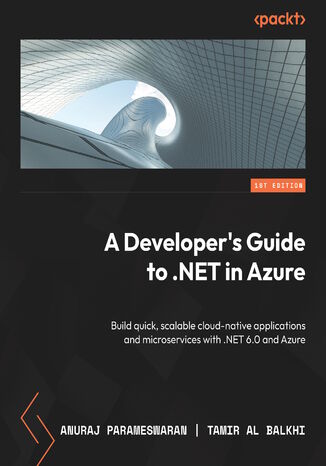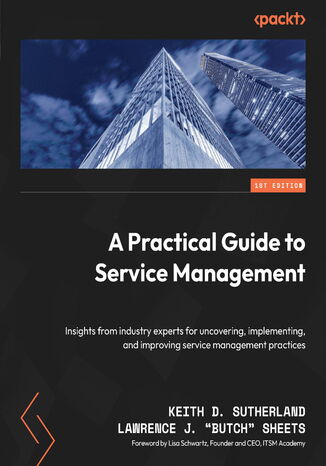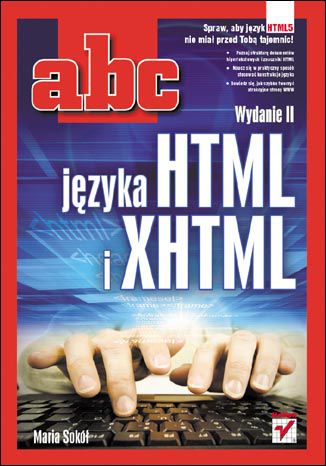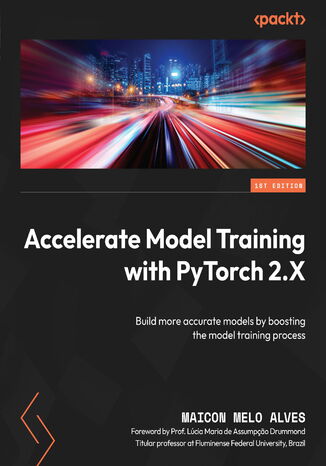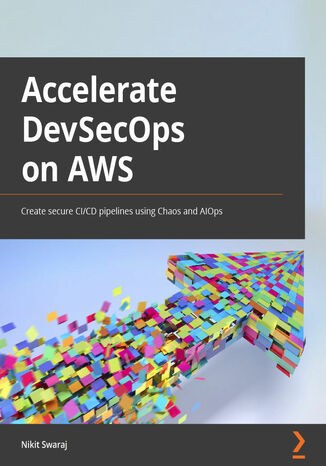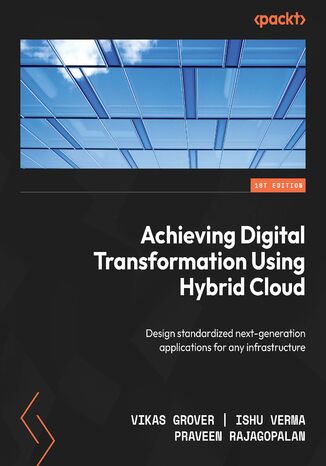Kategorien
E-Books
-
Wirtschaft
- Bitcoin
- Geschäftsfrau
- Coaching
- Controlling
- E-Business
- Ökonomie
- Finanzen
- Börse und Investitionen
- Persönliche Kompetenzen
- Computer im Büro
- Kommunikation und Verhandlungen
- Kleines Unternehmen
- Marketing
- Motivation
- Multimedia-Training
- Immobilien
- Überzeugung und NLP
- Steuern
- Sozialpolitik
- Handbȕcher
- Präsentationen
- Führung
- Public Relation
- Berichte, Analysen
- Geheimnis
- Social Media
- Verkauf
- Start-up
- Ihre Karriere
- Management
- Projektmanagement
- Personal (HR)
-
Für Kinder
-
Für Jugendliche
-
Bildung
-
Enzyklopädien, Wörterbücher
-
E-Presse
- Architektura i wnętrza
- Biznes i Ekonomia
- Haus und Garten
- E-Business
- Finanzen
- Persönliche Finanzen
- Unternehmen
- Fotografie
- Informatik
- HR und Gehaltsabrechnung
- Computer, Excel
- Buchhaltung
- Kultur und Literatur
- Wissenschaftlich und akademisch
- Umweltschutz
- meinungsbildend
- Bildung
- Steuern
- Reisen
- Psychologie
- Religion
- Landwirtschaft
- Buch- und Pressemarkt
- Transport und Spedition
- Gesundheit und Schönheit
-
Geschichte
-
Informatik
- Office-Programme
- Datenbank
- Bioinformatik
- IT Branche
- CAD/CAM
- Digital Lifestyle
- DTP
- Elektronik
- Digitale Fotografie
- Computergrafik
- Spiele
- Hacking
- Hardware
- IT w ekonomii
- Wissenschaftliche Pakete
- Schulbücher
- Computergrundlagen
- Programmierung
- Mobile-Programmierung
- Internet-Server
- Computernetzwerke
- Start-up
- Betriebssysteme
- Künstliche Inteligenz
- Technik für Kinder
- Webmaster
-
Andere
-
Fremdsprachen lernen
-
Kultur und Kunst
-
Lektüre
-
Literatur
- Anthologien
- Ballade
- Biografien und Autobiografien
- Für Erwachsene
- Drama
- Tagebücher, Memoiren, Briefe
- Epos
- Essay
- Science Fiction
- Felietonys
- Fiktion
- Humor, Satire
- Andere
- Klassisch
- Krimi
- Sachbücher
- Belletristik
- Mity i legendy
- Nobelpreisträger
- Kurzgeschichten
- Gesellschaftlich
- Okultyzm i magia
- Erzählung
- Erinnerungen
- Reisen
- Gedicht
- Poesie
- Politik
- Populärwissenschaftlich
- Roman
- Historischer Roman
- Prosa
- Abenteuer
- Journalismus
- Reportage
- Romans i literatura obyczajowa
- Sensation
- Thriller, Horror
- Interviews und Erinnerungen
-
Naturwissenschaften
-
Sozialwissenschaften
-
Schulbücher
-
Populärwissenschaft und akademisch
- Archäologie
- Bibliotekoznawstwo
- Filmwissenschaft
- Philologie
- Polnische Philologie
- Philosophie
- Finanse i bankowość
- Erdkunde
- Wirtschaft
- Handel. Weltwirtschaft
- Geschichte und Archäologie
- Kunst- und Architekturgeschichte
- Kulturwissenschaft
- Linguistik
- Literaturwissenschaft
- Logistik
- Mathematik
- Medizin
- Geisteswissenschaften
- Pädagogik
- Lehrmittel
- Populärwissenschaftlich
- Andere
- Psychologie
- Soziologie
- Theatrologie
- Teologie
- Theorien und Wirtschaftswissenschaften
- Transport i spedycja
- Sportunterricht
- Zarządzanie i marketing
-
Handbȕcher
-
Spielanleitungen
-
Professioneller und fachkundige Leitfaden
-
Jura
- Sicherheit und Gesundheit am Arbeitsplatz
- Geschichte
- Verkehrsregeln. Führerschein
- Rechtswissenschaften
- Gesundheitswesen
- Allgemeines. Wissenskompendium
- akademische Bücher
- Andere
- Bau- und Wohnungsrecht
- Zivilrecht
- Finanzrecht
- Wirtschaftsrecht
- Wirtschafts- und Handelsrecht
- Strafrecht
- Strafrecht. Kriminelle Taten. Kriminologie
- Internationales Recht
- Internationales und ausländisches Recht
- Gesundheitsschutzgesetz
- Bildungsrecht
- Steuerrecht
- Arbeits- und Sozialversicherungsrecht
- Öffentliches, Verfassungs- und Verwaltungsrecht
- Familien- und Vormundschaftsrecht
- Agrarrecht
- Sozialrecht, Arbeitsrecht
- EU-Recht
- Industrie
- Agrar- und Umweltschutz
- Wörterbücher und Enzyklopädien
- Öffentliche Auftragsvergabe
- Management
-
Führer und Reisen
- Afrika
- Alben
- Südamerika
- Mittel- und Nordamerika
- Australien, Neuseeland, Ozeanien
- Österreich
- Asien
- Balkan
- Naher Osten
- Bulgarien
- China
- Kroatien
- Tschechische Republik
- Dänemark
- Ägypten
- Europa
- Frankreich
- Berge
- Griechenland
- Spanien
- Niederlande
- Island
- Litauen
- Mapy, Plany miast, Atlasy
- Miniführer
- Deutschland
- Norwegen
- Aktive Reisen
- Polen
- Portugal
- Andere
- Russland
- Rumänien
- Slowakei
- Slowenien
- Schweiz
- Schweden
- Welt
- Türkei
- Ukraine
- Ungarn
- Großbritannien
- Italien
-
Psychologie
- Lebensphilosophien
- Kompetencje psychospołeczne
- zwischenmenschliche Kommunikation
- Mindfulness
- Allgemeines
- Überzeugung und NLP
- Akademische Psychologie
- Psychologie von Seele und Geist
- Arbeitspsychologie
- Relacje i związki
- Elternschafts- und Kinderpsychologie
- Problemlösung
- Intellektuelle Entwicklung
- Geheimnis
- Sexualität
- Verführung
- Aussehen ind Image
- Lebensphilosophien
-
Religion
-
Sport, Fitness, Diäten
-
Technik und Mechanik
Hörbücher
-
Wirtschaft
- Bitcoin
- Geschäftsfrau
- Coaching
- Controlling
- E-Business
- Ökonomie
- Finanzen
- Börse und Investitionen
- Persönliche Kompetenzen
- Kommunikation und Verhandlungen
- Kleines Unternehmen
- Marketing
- Motivation
- Immobilien
- Überzeugung und NLP
- Steuern
- Handbȕcher
- Präsentationen
- Führung
- Public Relation
- Geheimnis
- Social Media
- Verkauf
- Start-up
- Ihre Karriere
- Management
- Projektmanagement
- Personal (HR)
-
Für Kinder
-
Für Jugendliche
-
Bildung
-
Enzyklopädien, Wörterbücher
-
Geschichte
-
Informatik
-
Andere
-
Fremdsprachen lernen
-
Kultur und Kunst
-
Lektüre
-
Literatur
- Anthologien
- Ballade
- Biografien und Autobiografien
- Für Erwachsene
- Drama
- Tagebücher, Memoiren, Briefe
- Epos
- Essay
- Science Fiction
- Felietonys
- Fiktion
- Humor, Satire
- Andere
- Klassisch
- Krimi
- Sachbücher
- Belletristik
- Mity i legendy
- Nobelpreisträger
- Kurzgeschichten
- Gesellschaftlich
- Okultyzm i magia
- Erzählung
- Erinnerungen
- Reisen
- Poesie
- Politik
- Populärwissenschaftlich
- Roman
- Historischer Roman
- Prosa
- Abenteuer
- Journalismus
- Reportage
- Romans i literatura obyczajowa
- Sensation
- Thriller, Horror
- Interviews und Erinnerungen
-
Naturwissenschaften
-
Sozialwissenschaften
-
Populärwissenschaft und akademisch
-
Handbȕcher
-
Professioneller und fachkundige Leitfaden
-
Jura
-
Führer und Reisen
-
Psychologie
- Lebensphilosophien
- zwischenmenschliche Kommunikation
- Mindfulness
- Allgemeines
- Überzeugung und NLP
- Akademische Psychologie
- Psychologie von Seele und Geist
- Arbeitspsychologie
- Relacje i związki
- Elternschafts- und Kinderpsychologie
- Problemlösung
- Intellektuelle Entwicklung
- Geheimnis
- Sexualität
- Verführung
- Aussehen ind Image
- Lebensphilosophien
-
Religion
-
Sport, Fitness, Diäten
-
Technik und Mechanik
Videokurse
-
Datenbank
-
Big Data
-
Wirtschaft
-
Cybersicherheit
-
Data Science
-
DevOps
-
Für Kinder
-
Elektronik
-
Grafik / Video / CAX
-
Spiele
-
Microsoft Office
-
Entwicklungstools
-
Programmierung
-
Persönliche Entwicklung
-
Computernetzwerke
-
Betriebssysteme
-
Softwaretest
-
Mobile Geräte
-
UX/UI
-
Web development
Podcasts
- E-Books
- Informatik
- Programmierung
Programmierung
Unsere Online-Bibliothek enthält eine Reihe von Veröffentlichungen, dank derer Programmierung keine Geheimnisse vor Ihnen haben wird. Die hier enthaltenen Bücher führen Sie in Sprachen wie HTML, JavaScript, Python und CSS ein. Dank ihnen lernen Sie auch, wie Sie effektive Algorithmen erstellen, mobile Anwendungen entwerfen oder auf Websites auf die richtige Informationsarchitektur achten.
Curtis "Ovid" Poe, chromatic, Damian Conway
Zbiór skutecznych rozwiązań dla programistów aplikacji internetowych Zwiększanie produktywności pracy Tworzenie interfejsów użytkownika Wyszukiwanie i usuwanie błędów Perl, od swojego zaistnienia na rynku, wyewoluował od prostego narzędzia do przetwarzania tekstów i budowania raportów do formy zaawansowanego języka programowania pozwalającego na tworzenie praktycznie każdej aplikacji działającej w sieci. Mimo dość zaawansowanego "wieku", nie traci nic na popularności. W sieci pojawiają się coraz nowsze wersje, a grono programistów korzystających z Perla stale rośnie. Społeczność użytkowników tego języka skupiona wokół portalu CPAN udostępnia napisane przez siebie skrypty, wskutek czego z wieloma problemami programistycznymi można sobie poradzić, korzystając z gotowych rozwiązań lub sięgając do innych źródeł. Dzięki książce "100 sposobów na Perl" odkryjesz mało znane i mniej typowe zastosowania tego języka. Czytając ją, dowiesz się, w jaki sposób wykorzystać Perl do różnych zadań. Nauczysz się zwiększać efektywność swojej pracy, tworzyć elementy interaktywne i przetwarzać pliki tekstowe w nietypowy sposób. Zapoznasz się z odczytywaniem danych z baz i arkuszy kalkulacyjnych, pracą z modułami oraz programowaniem obiektowym. Znajdziesz tu także informacje o testowaniu kodu, usuwaniu błędów i optymalizowaniu wydajności programów napisanych w Perlu. Korzystanie z biblioteki CPAN Automatyczne formatowanie kodu w edytorze Emacs Generowanie elementów graficznych Przetwarzanie arkuszy kalkulacyjnych Praca z bazami danych Tworzenie zestawu narzędziowego modułów Korzystanie z obiektów Testowanie kodu Śledzenie wykonywania programu
Zbiór praktycznych porad dla programistów i projektantów baz danych Jak obsługiwać różne typy danych? W jaki sposób optymalizować wydajność baz danych? Jak budować raporty za pomocą języka SQL? Jesteś programistą, któremu przypadło w udziale opracowanie aplikacji bazodanowej? Szukasz sposobu na zoptymalizowanie działania zapytań SQL? A może zastanawiasz się, w jaki sposób sprawnie zarządzać kontami użytkowników bazy danych? Język SQL to potężne narzędzie, którego opanowanie pozwoli Ci na sprawne poruszanie się w gąszczu tabel każdej bazy danych. Za pomocą odpowiednio sformułowanych instrukcji można manipulować danymi, zarządzać kontami użytkowników i generować raporty. Jednak, pomimo stosunkowo niewielkiej ilości poleceń, język SQL kryje w sobie wiele zawiłości. Dzięki książce "100 sposobów na SQL" nie będziesz musiał odkrywać każdej z nich samodzielnie. W każdym z rozdziałów znajdziesz praktyczne porady i sposoby rozwiązywania typowych zadań programistycznych związanych z bazami danych i językiem SQL. Poznasz podstawy języka, dowiesz się, w jaki sposób przetwarzać różne typy danych i korzystać z symboli zastępczych. Nauczysz się tworzyć aplikacje sieciowe, optymalizować wydajność tabel i zapytań SQL oraz tworzyć raporty. Przeczytasz ponadto o administrowaniu serwerem bazy danych i udostępnianiu tabel użytkownikom. Podstawowe elementy języka SQL Łączenie tabel Przetwarzanie danych tekstowych Operacje na liczbach i datach Bazy danych w aplikacjach sieciowych Zapytania niezależne od tabel Maksymalizowanie wydajności zapytań Tworzenie raportów Administrowanie kontami użytkowników Udostępnianie informacji Zostań ekspertem w programowaniu baz danych!
Microsoft Silverlight is a programmable web browser plug-in that enables the animation, vector graphics, and audio-video playback features that characterize Rich Internet Applications. Silverlight is a great (and growing) RIA platform and games are the next level to exploit in it. But it doesn't offer 3D capabilities out of the box and integrating a 3D engine can involve lot of complex mathematics and matrix algebra. This book will help C# developers to get their fingers on the pulse of 3D in Silverlight.This book uses Balder, an open source 3D engine offering 3D capabilities for Silverlight 3. It leaves out boring matrix algebra and complex 3D mathematics. By the end of the book you will have explored the entire engine, and will be able to design and program your own 3D games with ease!The book begins by introducing you to the fundamental concepts of 2D games and then drives you into the 3D world, using easy-to-follow, step-by-step examples. The book employs amazing graphics and impressive performance, and increasingly adds more features to a 3D game giving you a rich interactive experience.By following the practical examples in this book, you will learn the important concepts, from the creation of the initial models, up to the addition of physics and artificial intelligence.The book helps you to provide realistic behaviors for 3D characters by enveloping models with different textures, using lights to create effects, animating multiple 3D characters using a physics engine (Farseer Physics Engine), and simulating real-life physics. Videos, music, and sounds associated with specific events offer the final touches to the 3D game development learning experience.
OpenGL is a popular cross-language, cross-platform application programming interface (API) used for rendering 2D and 3D graphics, while Vulkan is a low-overhead, cross-platform 3D graphics API that targets high-performance applications. 3D Graphics Rendering Cookbook helps you learn about modern graphics rendering algorithms and techniques using C++ programming along with OpenGL and Vulkan APIs.The book begins by setting up a development environment and takes you through the steps involved in building a 3D rendering engine with the help of basic, yet self-contained, recipes. Each recipe will enable you to incrementally add features to your codebase and show you how to integrate different 3D rendering techniques and algorithms into one large project. You'll also get to grips with core techniques such as physically based rendering, image-based rendering, and CPU/GPU geometry culling, to name a few. As you advance, you'll explore common techniques and solutions that will help you to work with large datasets for 2D and 3D rendering. Finally, you'll discover how to apply optimization techniques to build performant and feature-rich graphics applications.By the end of this 3D rendering book, you'll have gained an improved understanding of best practices used in modern graphics APIs and be able to create fast and versatile 3D rendering frameworks.
Algorithms have always played an important role in both the science and practice of computing. Beyond traditional computing, the ability to use algorithms to solve real-world problems is an important skill that any developer or programmer must have. This book will help you not only to develop the skills to select and use an algorithm to solve real-world problems but also to understand how it works.You’ll start with an introduction to algorithms and discover various algorithm design techniques, before exploring how to implement different types of algorithms, such as searching and sorting, with the help of practical examples. As you advance to a more complex set of algorithms, you'll learn about linear programming, page ranking, and graphs, and even work with machine learning algorithms, understanding the math and logic behind them. Further on, case studies such as weather prediction, tweet clustering, and movie recommendation engines will show you how to apply these algorithms optimally. Finally, you’ll become well versed in techniques that enable parallel processing, giving you the ability to use these algorithms for compute-intensive tasks.By the end of this book, you'll have become adept at solving real-world computational problems by using a wide range of algorithms.
40 algorytmów, które powinien znać każdy programista. Nauka implementacji algorytmów w Pythonie
Wiedza o algorytmach jest niezbędna każdemu, kto rozwiązuje problemy programistyczne. Algorytmy są również ważne w teorii i praktyce obliczeń. Każdy programista powinien znać możliwie szeroki ich zakres. Powinien też umieć z nich korzystać przy rozwiązywaniu rzeczywistych problemów, w tym przy projektowaniu algorytmów, ich modyfikacji i implementacji. Niezależnie od tego, czy zajmujesz się sztuczną inteligencją, zabezpieczaniem systemów informatycznych lub inżynierią danych, musisz dobrze zrozumieć, czym właściwie są i jak działają algorytmy. Ta książka jest praktycznym wprowadzeniem do algorytmów i ich zastosowania. Znalazły się w niej podstawowe informacje i pojęcia dotyczące algorytmów, ich działania, a także ograniczeń, jakim podlegają. Opisano też techniki ich projektowania z uwzględnieniem wymagań dotyczących struktur danych. Zaprezentowano klasyczne algorytmy sortowania i wyszukiwania, algorytmy grafowe, jak również wiele zagadnień związanych ze sztuczną inteligencją: algorytmy uczenia maszynowego, sieci neuronowych i przetwarzania języka naturalnego. Ważną częścią publikacji są rozdziały poświęcone przetwarzaniu danych i kryptografii oraz algorytmom powiązanym z tymi zagadnieniami. Wartościowym podsumowaniem prezentowanych treści jest omówienie technik pracy z problemami NP-trudnymi. W książce między innymi: struktury danych i algorytmy w bibliotekach Pythona algorytm grafowy służący do wykrywania oszustw w procesie analizy sieciowej przewidywanie pogody przy użyciu algorytmów uczenia nadzorowanego rozpoznawanie obrazu za pomocą syjamskich sieci neuronowych tworzenie systemu rekomendacji filmów szyfrowanie symetryczne i asymetryczne podczas wdrażania modelu uczenia maszynowego Oto algorytm: poznaj, zaimplementuj, zastosuj!
The ability to use algorithms to solve real-world problems is a must-have skill for any developer or programmer. This book will help you not only to develop the skills to select and use an algorithm to tackle problems in the real world but also to understand how it works.You'll start with an introduction to algorithms and discover various algorithm design techniques, before exploring how to implement different types of algorithms, with the help of practical examples. As you advance, you'll learn about linear programming, page ranking, and graphs, and will then work with machine learning algorithms to understand the math and logic behind them.Case studies will show you how to apply these algorithms optimally before you focus on deep learning algorithms and learn about different types of deep learning models along with their practical use.You will also learn about modern sequential models and their variants, algorithms, methodologies, and architectures that are used to implement Large Language Models (LLMs) such as ChatGPT.Finally, you'll become well versed in techniques that enable parallel processing, giving you the ability to use these algorithms for compute-intensive tasks.By the end of this programming book, you'll have become adept at solving real-world computational problems by using a wide range of algorithms.
Kubernetes is a trending topic among engineers, CTOs, CIOs, and other technically sound professionals. Due to its proliferation and importance for all cloud technologies, DevOps engineers nowadays need a solid grasp of key Kubernetes concepts to help their organization thrive.This book equips you with all the requisite information about how Kubernetes works and how to use it for the best results. You’ll learn everything from why cloud native is important to implementing Kubernetes clusters to deploying applications in production. This book takes you on a learning journey, starting from what cloud native is and how to get started with Kubernetes in the cloud, on-premises, and PaaS environments such as OpenShift. Next, you’ll learn about deploying applications in many ways, including Deployment specs, Ingress Specs, and StatefulSet specs. Finally, you’ll be comfortable working with Kubernetes monitoring, observability, and security. Each chapter of 50 Kubernetes Concepts Every DevOps Engineer Should Know is built upon the previous chapter, ensuring that you develop practical skills as you work through the code examples in GitHub, allowing you to follow along while giving you practical knowledge.By the end of this book, you’ll be able to implement Kubernetes in any environment, whether it’s an existing environment, a greenfield environment, or your very own lab running in the cloud or your home.
A Blueprint for Production-Ready Web Applications will help you expand upon your coding knowledge and teach you how to create a complete web application. Unlike other guides that focus solely on a singular technology or process, this book shows you how to combine different technologies and processes as needed to meet industry standards.You’ll begin by learning how to set up your development environment, and use Quart and React to create the backend and frontend, respectively. This book then helps you get to grips with managing and validating accounts, structuring relational tables, and creating forms to manage data. As you progress through the chapters, you’ll gain a comprehensive understanding of web application development by creating a to-do app, which can be used as a base for your future projects. Finally, you’ll find out how to deploy and monitor your application, along with discovering advanced concepts such as managing database migrations and adding multifactor authentication.By the end of this web development book, you’ll be able to apply the lessons and industry best practices that you’ve learned to both your personal and work projects, allowing you to further develop your coding portfolio.
Hamida Rebai Trabelsi, Marc-Andre Laniel
Companies face several challenges during cloud adoption, with developers and architects needing to migrate legacy applications and build cloud-oriented applications using Azure-based technologies in different environments. A Developer’s Guide to Cloud Apps Using Microsoft Azure helps you learn how to migrate old apps to Azure using the Cloud Adoption Framework and presents use cases, as well as build market-ready secure and reliable applications.The book begins by introducing you to the benefits of moving legacy apps to the cloud and modernizing existing ones using a set of new technologies and approaches. You’ll then learn how to use technologies and patterns to build cloud-oriented applications. This app development book takes you on a journey through three major services in Azure, namely Azure Container Registry, Azure Container Instances, and Azure Kubernetes Service, which will help you build and deploy an application based on microservices. Finally, you’ll be able to implement continuous integration and deployment in Azure to fully automate the software delivery process, including the build and release processes.By the end of this book, you’ll be able to perform application migration assessment and planning, select the right Azure services, and create and implement a new cloud-oriented application using Azure containers and orchestrators.
Anuraj Parameswaran, Tamir Al Balkhi
A Developer’s Guide to .NET in Azure helps you embark on a transformative journey through Microsoft Azure that is tailored to .NET developers. This book is a curated compendium that’ll enable you to master the creation of resilient, scalable, and highly available applications.The book is divided into four parts, with Part 1 demystifying Azure for you and emphasizing the portal's utility and seamless integration. The chapters in this section help you configure your workspace for optimal Azure synergy. You’ll then move on to Part 2, where you’ll explore serverless computing, microservices, containerization, Dapr, and Azure Kubernetes Service for scalability, and build pragmatic, cost-effective applications using Azure Functions and Container apps. Part 3 delves into data and storage, showing you how to utilize Azure Blob Storage for unstructured data, Azure SQL Database for structured data, and Azure Cosmos DB for document-oriented data. The final part teaches you about messaging and security, utilizing Azure App Configuration, Event Hubs, Service Bus, Key Vault, and Azure AD B2C for robust, secure applications.By the end of this book, you’ll have mastered Azure's responsive infrastructure for exceptional applications.
Keith D. Sutherland, Lawrence J. "Butch" Sheets, Lisa Schwartz
Many organizations struggle to find practical guidance that can help them to not only understand but also apply service management best practices. Packed with expert guidance and comprehensive coverage of the essential frameworks, methods, and techniques, this book will enable you to elevate your organization’s service management capability.You’ll start by exploring the fundamentals of service management and the role of a service provider. As you progress, you’ll get to grips with the different service management frameworks used by IT and enterprises. You'll use system thinking and design thinking approaches to learn to design, implement, and optimize services catering to diverse customer needs.This book will familiarize you with the essential process capabilities required for an efficient service management practice, followed by the elements key to its practical implementation, customized to the organization’s business needs in a sustainable and repeatable manner. You’ll also discover the critical success factors that will enhance your organization’s ability to successfully implement and sustain a service management practice.By the end of this handy guide, you’ll have a solid grasp of service management concepts, making this a valuable resource for on-the-job reference.
ABC języka HTML i XHTML. Wydanie II
Spraw, aby język HTML5 nie miał przed Tobą tajemnic! Poznaj strukturę dokumentów hipertekstowych i znaczniki HTML Naucz się w praktyczny sposób stosować konstrukcje języka Dowiedz się, jak szybko tworzyć atrakcyjne strony WWW W obecnych czasach po prostu nie wypada nie mieć swojej strony w internecie. Prawda ta dotyczy już nie tylko dużych firm, organizacji społecznych czy instytucji państwowych, lecz również tysięcy prywatnych osób, które nie chcą pozostawać anonimowymi konsumentami treści, lecz pragną zaistnieć w sieci i za jej pośrednictwem dzielić się ze światem swoimi przemyśleniami, tekstami, zdjęciami czy filmami. Wielu ludzi ogranicza się do tworzenia prostych, niewyróżniających się niczym blogów, jednak niektórzy pragną nadać swoim stronom niepowtarzalny charakter. To właśnie do nich kierowana jest książka "ABC języka HTML i XHTML. Wydanie II" . W przystępny sposób wyjaśnia ona podstawowe zagadnienia związane z używaniem najpopularniejszych języków hipertekstowych, opisuje strukturę i metody tworzenia dokumentów WWW, a także wskazuje narzędzia, które mogą ułatwić pracę projektanta. Dzięki lekturze tego podręcznika zdobędziesz wiedzę niezbędną do kodowania treści witryn i dowiesz się, jak należy opracować właściwy system nawigacji. Poznasz też metody korzystania z tabel, grafik i arkuszy stylów. Podstawowe pojęcia związane z siecią i tworzeniem treści WWW Struktura, konstrukcje i znaczniki języka HTML Narzędzia ułatwiające pracę projektanta stron WWW Definiowanie struktury i formatu treści tekstowych Korzystanie z odnośników i tworzenie systemu nawigacji Metody osadzania obrazów i określania ich parametrów Tworzenie i formatowanie tabel Używanie kaskadowych arkuszy stylów Naucz się tworzyć profesjonalny kod stron WWW krok po kroku!
Maicon Melo Alves, Lúcia Maria de Assumpçao Drummond
Penned by an expert in High-Performance Computing (HPC) with over 25 years of experience, this book is your guide to enhancing the performance of model training using PyTorch, one of the most widely adopted machine learning frameworks.You’ll start by understanding how model complexity impacts training time before discovering distinct levels of performance tuning to expedite the training process. You’ll also learn how to use a new PyTorch feature to compile the model and train it faster, alongside learning how to benefit from specialized libraries to optimize the training process on the CPU. As you progress, you’ll gain insights into building an efficient data pipeline to keep accelerators occupied during the entire training execution and explore strategies for reducing model complexity and adopting mixed precision to minimize computing time and memory consumption. The book will get you acquainted with distributed training and show you how to use PyTorch to harness the computing power of multicore systems and multi-GPU environments available on single or multiple machines. By the end of this book, you’ll be equipped with a suite of techniques, approaches, and strategies to speed up training , so you can focus on what really matters—building stunning models!
Accelerating DevSecOps on AWS. Create secure CI/CD pipelines using Chaos and AIOps
Continuous integration and continuous delivery (CI/CD) has never been simple, but these days the landscape is more bewildering than ever; its terrain riddled with blind alleys and pitfalls that seem almost designed to trap the less-experienced developer. If you’re determined enough to keep your balance on the cutting edge, this book will help you navigate the landscape with ease.This book will guide you through the most modern ways of building CI/CD pipelines with AWS, taking you step-by-step from the basics right through to the most advanced topics in this domain.The book starts by covering the basics of CI/CD with AWS. Once you’re well-versed with tools such as AWS Codestar, Proton, CodeGuru, App Mesh, SecurityHub, and CloudFormation, you’ll focus on chaos engineering, the latest trend in testing the fault tolerance of your system. Next, you’ll explore the advanced concepts of AIOps and DevSecOps, two highly sought-after skill sets for securing and optimizing your CI/CD systems. All along, you’ll cover the full range of AWS CI/CD features, gaining real-world expertise.By the end of this AWS book, you’ll have the confidence you need to create resilient, secure, and performant CI/CD pipelines using the best techniques and technologies that AWS has to offer.
Vikas Grover, Ishu Verma, Praveen Rajagopalan
Hybrid cloud technology can be leveraged by organizations aiming to build next-gen applications while safeguarding prior technological investments. This book will help you explore different hybrid cloud architectural patterns, whether designing new projects or migrating legacy applications to the cloud.You'll learn about the key building blocks of hybrid cloud enabling you to deploy, manage, and secure applications and data while porting the workloads between environments without rebuilding. Further, you’ll explore Kubernetes, GitOps, and Layer 3/7 services to reduce operational complexity. You'll also learn about nuances of security and compliance in hybrid cloud followed by the economics of hybrid cloud. You’ll gain a deep understanding of the concepts with use cases from telecom 5G and industrial manufacturing, giving you a glimpse into real industry problems resolved by hybrid cloud, and unlocking millions of dollars of opportunities for enterprises.By the end of this book, you'll be well-equipped to design and develop efficient hybrid cloud strategies, lead conversations with senior IT and business executives, and succeed in hybrid cloud implementation or transformation opportunities.


